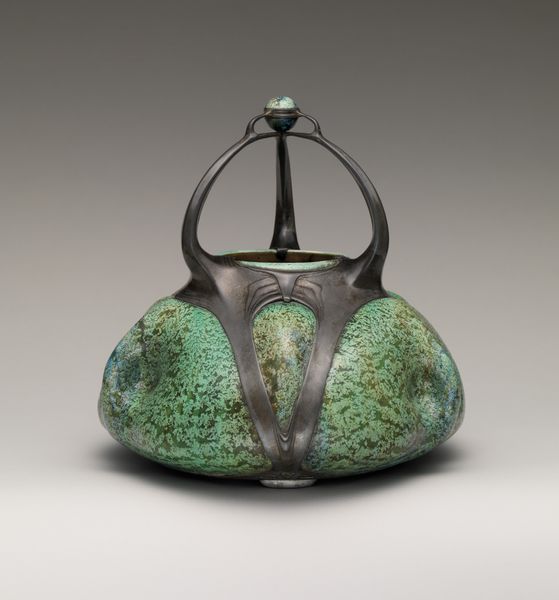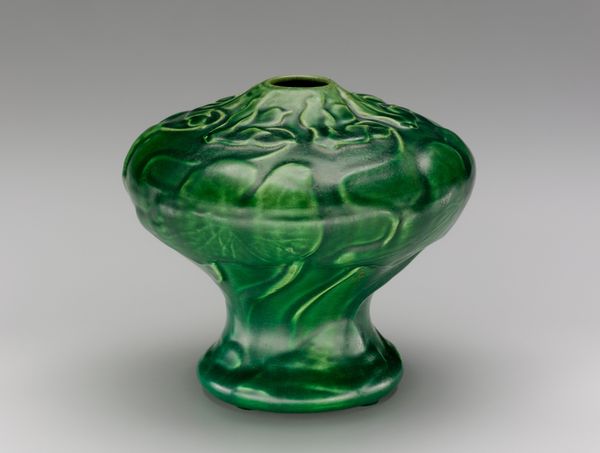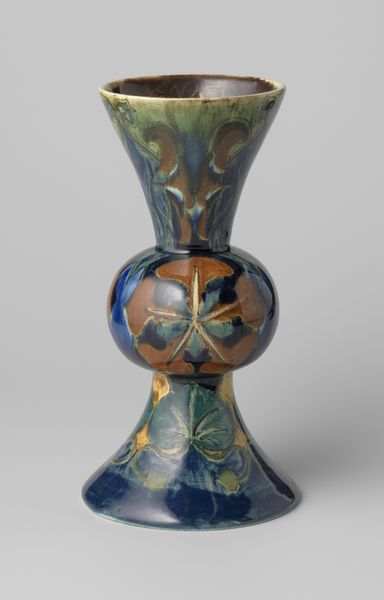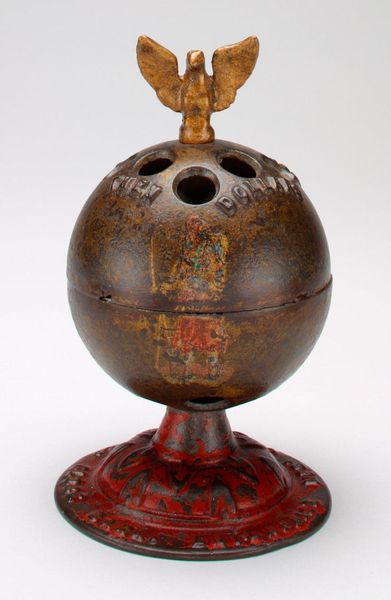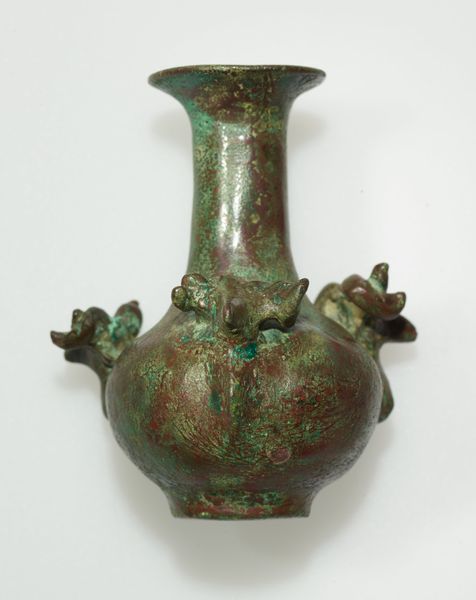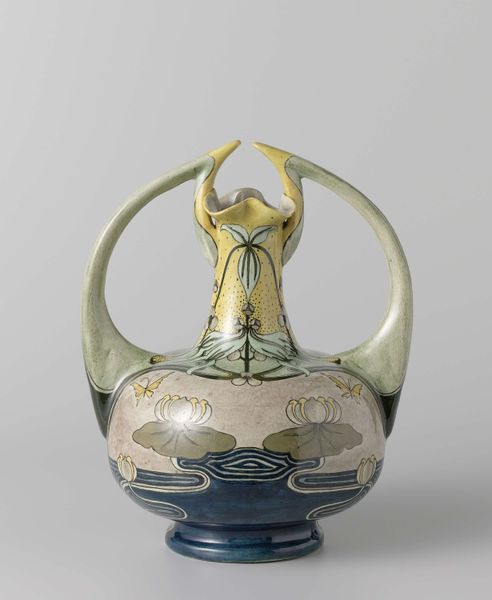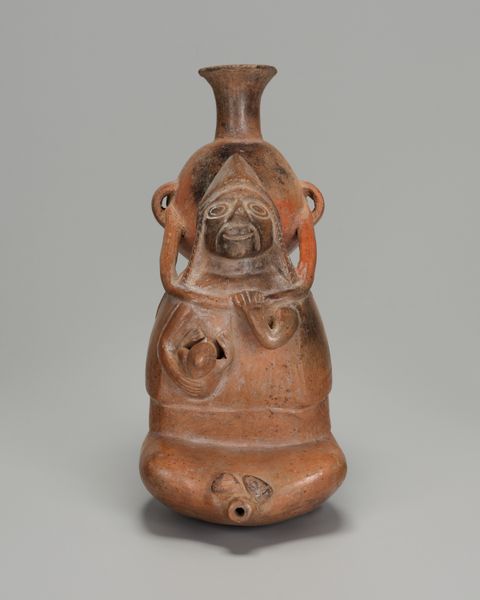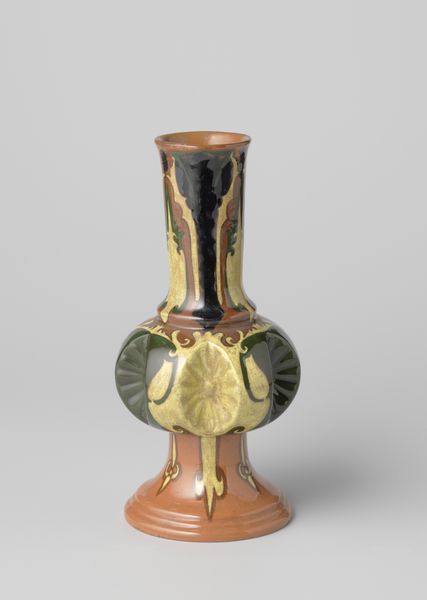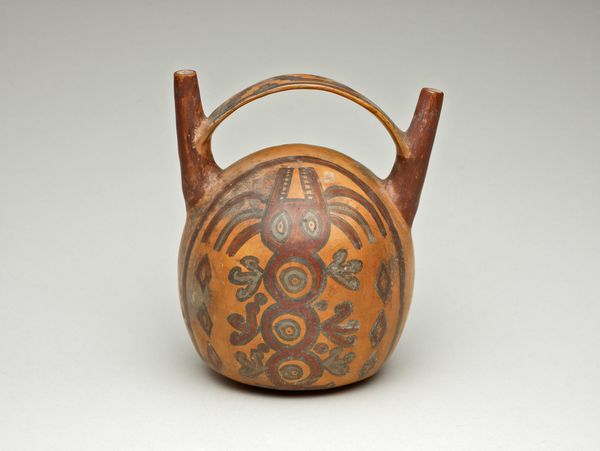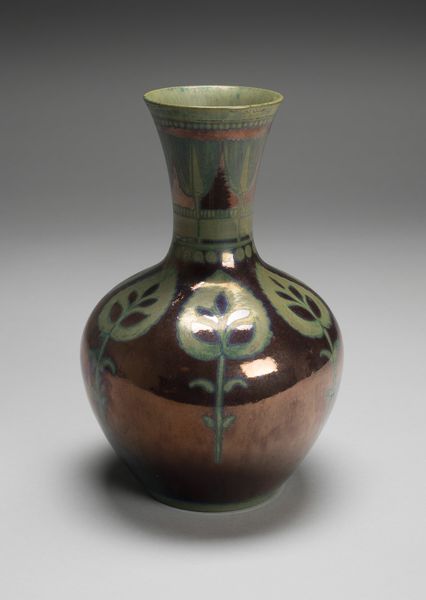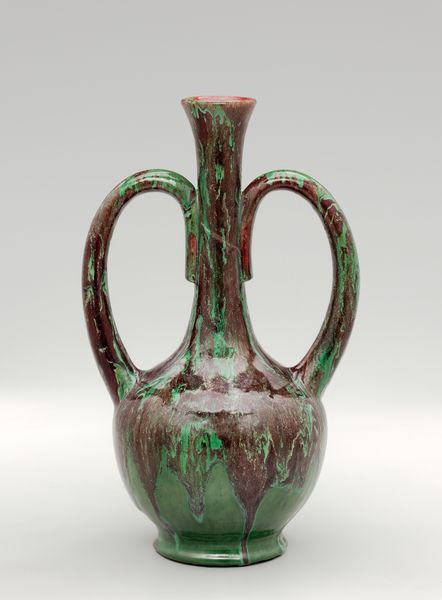
ceramic, sculpture
#
aestheticism
#
ceramic
#
aesthetic-movement
#
sculpture
#
ceramic
#
decorative-art
Dimensions: 27.3 × 21.6 cm (10 3/4 × 8 1/2 in.)
Copyright: Public Domain
Editor: We’re looking at Christopher Dresser’s "Grotesque Vase" from around 1893, a ceramic piece now at the Art Institute of Chicago. The glazes are really striking, almost otherworldly, and those stylized animal figures forming the handles are quite… unique. What can you tell us about it? Curator: Well, focusing on its material reality, the vase embodies the fascinating collision of industry and artistry of the Aesthetic Movement. Think about the production – likely molded and mass-produced to some extent, enabling wider access than purely hand-crafted items. Yet, those 'grotesque' animal forms are individually applied, reflecting a yearning for individual expression. Editor: So, the aesthetic wasn't just about beauty, but about…access? How would different levels of society react to such production? Curator: Precisely. The availability of "artistic" objects, previously exclusive to the wealthy, democratized design. Also consider the process itself: the firing of the clay, the chemistry of the glazes. Did Dresser embrace or critique the rise of industrial ceramic production through these grotesque embellishments? Was this ornamentation thought of as a means to make people reconsider mass production by making the production seem unnatural? Editor: Interesting… the handles feel a bit like they're commenting on decoration for decoration's sake, even at the sacrifice of natural form. Curator: And what about consumption? How does a mass-produced vase change domestic space and how people lived with objects? Does it offer a personal reflection of taste for a wider audience? Editor: That reframes my understanding entirely. It’s not just a vase; it's a product of its time, a physical embodiment of the era’s tensions surrounding industrialization and the art market. Curator: Exactly. By analyzing the material, method, and market, we unlock layers of meaning beyond just aesthetic appeal. Hopefully, you consider more critically the commodification of aesthetic design from here onward!
Comments
No comments
Be the first to comment and join the conversation on the ultimate creative platform.

